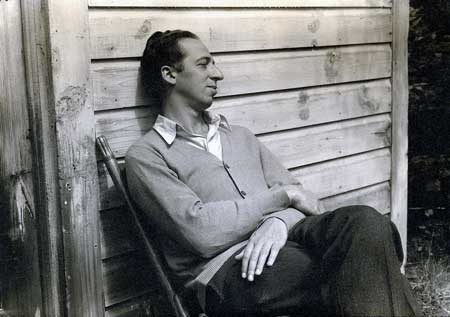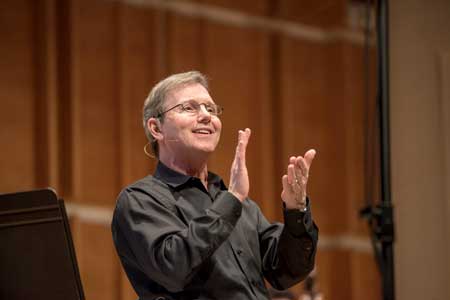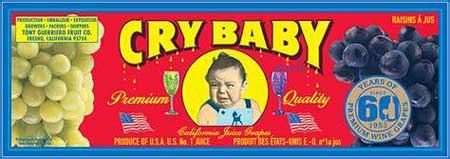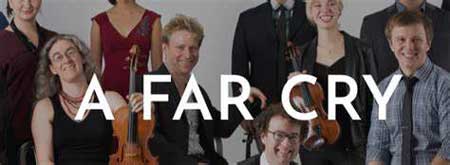Concert, Lecture
Inventing America, Part 2
Copland’s Appalachian Spring:
An American Voice for Classical Music
Rob Kapilow, commentary
Celebrity Series of Boston
A Far Cry, chamber orchestra
February 5, 2023, 3pm
Jordan Hall
Symphony Hall area, Boston
Appalachian Spring (Ballet for Martha) Suite
Original Version for 13 instruments

My jaw constantly drops when I attend concerts featuring A Far Cry. They are all remarkably different and all brilliantly executed. This one, melding the talents of A Far Cry and commentator Rob Kapilow on behalf of the Celebrity Series of Boston, offering a combination of analysis, illustration and performance, was no exception. Endlessly fascinating in its revelations, and immensely satisfying in performance, it provided a wonderful merging of intellectual and experiential insights.

Photo: John Johansen
Amazingly dynamic and multitalented, Kapilow offered the analysis of Aaron Copland’s 1944 composition Appalachian Spring during the first hour of the program. Kapilow is engaging, relaxed, funny, and insightful as he illustrates his musical points with virtuosity on an electric piano. He packs a tremendous amount into an hour, going through each passage of the piece and pointing out many of its rhythmic and tonal intricacies and curiosities. His capacity to do this in an energetic and non-desultory way is remarkable. He has the audience clapping and sounding out rhythms at various points and even encourages it to repeat its attempts at times to do better. His deft manner makes the audience a real participant in the analysis which makes the detail-filled hour move along easily and pleasantly.
Apart from pointing out the particular details of chordal and tonal modulation and rhythmic variation, Kapilow made the important point that the piece is not as much of an innocently carved replication of nineteenth century pioneer life as one might think. He constantly pointed out how Copland really invented the mood and tone of the piece, that Copland’s clever and masterful variations on simple tonalities paired with a memorably ramified set of variations on the theme Simple Things makes the piece what it is. In short, according to Kapilow’s insightful account, the world that came to be associated with Appalachian Spring, the evocation of a deeply American spirit, was not a simple stringing together of familiar tunes. Rather, it was a masterful creation out of a set of simple ideas that, in Copland’s imaginative genius, gave rise to a compellingly persuasive portrait of American life that is now all but indistinguishable from what we have come to think of when we think of the iconic American theme.
Throughout the talk, Kapilow invoked A Far Cry to demonstrate the various points he made, and they rose to the occasion with precision, grace, and stunning virtuosity. In some ways, this pastiche of musical illustrations seemed almost more difficult to execute than the performance of the whole piece itself, since it required precise entries, exits, and, in some cases, variations of one sort or another. But Kapilow was relaxed in his mode of calling them out and The Criers were extremely adept at pulling it off.
The typical format of these What Makes It Great? concerts led by Kapilow is to follow the hour-long lecture-demonstration with an intermission, followed by a performance of the piece and immediately thereafter by a question and answer period from the audience; the audience at this performance was filled with questions, some of which were truly stimulating and interesting.
Among the first was a question about the role of Jewish-American composers like Copland, Irving Berlin and George Gershwin who became so significant in creating a sense of distinctively American music in the twentieth century. Kapilow’s answer was persuasive: in the early twentieth century, Jews from immigrant families found themselves in an evolving world that begged for re-creation and invention, and the American idea presented itself to them as new terrain. It is useful to remember, as Kapilow pointed out, that Copland was not from Nebraska, but was a Jew from Brooklyn whose family name had originally been named Kaplan. What makes something like Appalachian Spring so compellingly American is that it seeks out and articulates a kind of hopefulness, so much in keeping with the American consciousness. Pointing out that foundational sense of hopefulness in those words All men are created equal from The Declaration of Independence, Kapilow appropriately acknowledged that this hopeful American theme also lies within a history of darker themes including slavery that infused the world in which those words were written.
Another question from the audience was directed to members of A Far Cry, asking how it felt to be an orchestra without a conductor. One member answer immediately and eloquently: we are not without a conductor, we are full of conductors, with each one of us constantly pitching in. Kapilow embellished the point to note that sometimes this mutuality of leadership led to more rehearsal time, but acknowledged, as all who have come to love A Far Cry’s democratic and participatory approach, as distinctively brilliant and inspiring.
Inspiring, indeed, was this concert: in capable and technically refined playing, in the elevated spirit of playing, in Rob Kapilow’s animated and insightful illustration of the intricacies of the piece, and in the artful way that he and The Criers carried their listeners into the heart of Appalachian Spring.
Some more detailed notes on Rob Kapilow’s lecture-demonstration with A Far Cry:
Appalachian Spring was a favorite when Kapilow was twelve. He had the London Philharmonic recording with Copland conducting. He didn’t know much about classical music, but he liked this. He imagined the piece was a wonderful evocation of life in the Appalachians. Only a few years later he found out the piece was named only very shortly before the first performance by Martha Graham, its choreographer. Copland, when commissioned to write it, never heard anything about Appalachia or spring. Graham took the name from a line in a poem from The Bridge a collection by Hart Crane; Spring, in the poem, actually refers to a body of running water, not a season, easy to confuse in the title of Copland’s piece.
Graham had given Copland some pointers however. It was to be a legend of American living, a pioneer celebration set at the end of the nineteenth century. Youth, spring, hope all figured in, so important in 1944, the year of its composition near the end of World War II.
Copland’s compositional style, like Graham’s choreographic style, seemed deceptively simple. In neither case does that seeming simplicity do justice to the underlying complexities. Six notes form the beginning of the piece, and almost the whole piece grows out of endless modulations of those. Two chords – tonic and dominant – are unfolded in a string of notes that influence the whole piece. Indeed, transpositions do occur and there is an endless interleaving of the resulting configurations of notes. It is so interesting that Appalachian Spring was written in the same year as Arnold Schoenberg’s Ode to Napoleon which uses a very different and more arcane compositional technique.
Two basic chords, which Kapilow calls Shaker 1 and Shaker 2 emerge. With some wryness, Kapilow asks people not to take those terms out of the hall, but they are such good terms that everyone will, including members of A Far Cry who lovingly comment at the end that these terms will always remain for them.
Then there is a lot of audience clapping to triplicate rhythms under Kapilow’s guidance – lots of fun – and the identification of oompah oompah in the bass and duh-ah-dah duh-ah-dah somewhere else, also a lot of fun. When the piano demonstrates its addition to the rhythms, the subtlety and integration of both the composition and the execution by A Far Cry is so evident.
There is then twenty-eight measures of a repeating G with varied notes above as the theme from Simple Gifts, the theme for which Appalachian Spring is known, appears no sooner than two-thirds of the way through. Amazing! That song was written in 1843, and, if I am not mistaken, was originally intended as a dance tune. But here, with wizardry, Copland ramifies and builds it up to create a Shaker world in the present. We see the tune modulate, slow down, and then played in a round – endless variations on the simple and appealing tune. In the midst of this, a simple C scale walks its way downwards accompanying the melody, and it works!
Kapilow makes the point over and over that this work is an invention of Copland, not a rendition or depiction of some traditional idea. There are, of course, traditional elements to it, but the world of these Shakers, as created by Copland, is his alone. As Kapilow points out, there is some subtle irony in the motivating vision of Shaker life in Pennsylvania in the nineteenth century; though there were actually NO Shakers in Pennsylvania at the time, this did not stop Martha Graham and Aaron Copland from creating a memorable work that was motivated by that image. Fascinating! But, as Kapilow points out, Copland didn’t want to know TOO much about what he was creating beforehand. That was true when he came to write Billy the Kid (1939) as well, which he claimed helped him to be imaginative in his own idiom.
Isamu Noguchi was the designer of the settings for Appalachian Spring and he, Graham and Copland all contributed to a sleek aesthetic, a kind of stripped-down world that appeared out of their internally more complex designs. All of it was in service of illustrating something essentially American, a sense of freedom and possibility, though as Kapilow articulately and artfully summed it up, Copland’s hopeful America is the one we have come to believe in, though it’s not always the one we live in.
A stimulating, informative and at many times hilarious lecture, levitated by Kapilow’s energy, enthusiasm and great capacity to engage an audience.
Some more detailed notes on the performance:
Sedate opening. Strings. Clarinet.
Low piano chord. Accompanying flute.
Second chord emerging from above.
Slight variations in rhythm, like a delicately woven fabric. The haunting call of the flute from above, echoed by the clarinet and bassoon.
Interleaved, half walks down the scale to the gathering point.
Then the wild arpeggios unfolding, varied slightly then just approached from below, revealing the ever interesting mode of composition.
Perfectly tonal, but oddly feels modal at times.
Then the scaling of the tower in triplets.
It’s a folk dance built on a hymn!
The tonal play anticipates the emerging tonalities of Simple Gifts.
Interlude with triplicates set off by the bassoon.
Woodwinds fallying together from above while the paired strings reach from below.
I hear a little West Side Story here!
The upper strings duke it out with the cellos and basses.
Returns to the hymnal motif, the prairie.
The flute leads the way, supported by the bassoon.
Surprising how rich this chamber orchestra version sounds!
The playing of The Criers is literally exquisite.
They pick up and hop along, piano perfectly integrated.
Switch of rhythm to broken rhythmic pairs and the escalation of the dance, a bit rodeo-like.
There is something Hispanic in here.
Then the plateau of unison in themes – simplicity and harmony
Followed by complication and syncopation, then running in the violins accompanied by single notes in the violas.
More scrabbling around the scales – up, down, all over with genuine excitement. Racing, with all on a chase with parallel harmonies in the piano.
Recapitulation of serene opening with what seems like an ending, then the clarinet breaks into Simple Gifts.
Such delicacy and precision in this playing! And yet a full orchestral richness.
Just two cellos? so masterfully consonant!
Ramification of the Simple Gifts theme.
Then a punctuated restatement with a passionate swirl of piano scales.
A consonant and dramatic restatement of Simple Gifts by all
Then the quiet meditation afterwards.
Copland says it again, wisely.
Then it goes up a few notes and repeats, always interesting.
flute re-enters as with a benediction.
The simple interesting interplay of notes.
Then the clarinet opening to the display of the original splayed chord.
Mesmerizing, fulfilling, brilliantly executed.
– BADMan (aka Charles Munitz)




Leave a Reply